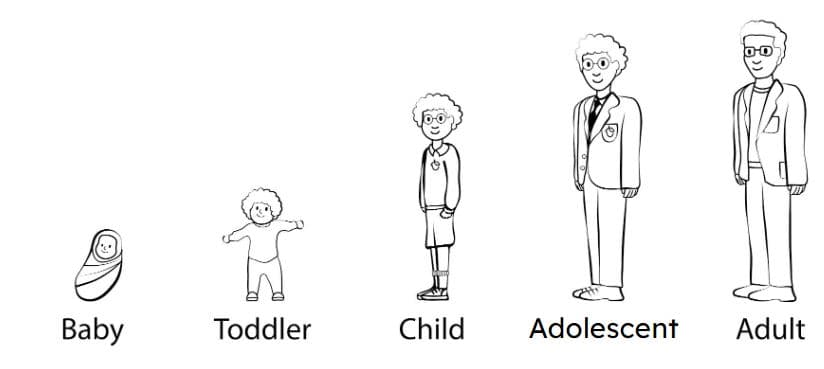Myths about teaching can hold you back
- Year 5
Finding out about human height
I can take accurate measurements and compare human height.
- Year 5
Finding out about human height
I can take accurate measurements and compare human height.
These resources will be removed by end of Summer Term 2025.
Switch to our new teaching resources now - designed by teachers and leading subject experts, and tested in classrooms.
These resources were created for remote use during the pandemic and are not designed for classroom teaching.
Lesson details
Key learning points
- Humans continuously grow taller from birth through to the end of puberty.
- Growth rate is maximum during infancy and adolescence.
- Girls are often taller than boys at 12 to 14 years, but men are generally taller than women as adults.
- Humans are taller now than in the past, due to improved nutrition and health.
- We can find out about changes in height by measuring humans of different ages.
Keywords
Puberty - Puberty is a time when human bodies go through changes to become adults that are able to reproduce.
Growth rate - Growth rate is the rate or speed at which something gets bigger.
Average - An average is a number that is calculated by adding amounts together and then dividing the total by the number of quantities.
Measure - To measure is to use equipment to find numbers to describe a feature of something such as its length, weight, size or time.
Result - The result of a test or enquiry is what happened or what was found out.
Common misconception
Pupils may think that humans only grow on their birthdays or in short, intermittent spurts rather than growth being continuous throughout childhood and adolescence.
Using the lesson resources to support, explain that growth is continuous throughout youth until adulthood.
To help you plan your year 5 science lesson on: Finding out about human height, download all teaching resources for free and adapt to suit your pupils' needs...
To help you plan your year 5 science lesson on: Finding out about human height, download all teaching resources for free and adapt to suit your pupils' needs.
The starter quiz will activate and check your pupils' prior knowledge, with versions available both with and without answers in PDF format.
We use learning cycles to break down learning into key concepts or ideas linked to the learning outcome. Each learning cycle features explanations with checks for understanding and practice tasks with feedback. All of this is found in our slide decks, ready for you to download and edit. The practice tasks are also available as printable worksheets and some lessons have additional materials with extra material you might need for teaching the lesson.
The assessment exit quiz will test your pupils' understanding of the key learning points.
Our video is a tool for planning, showing how other teachers might teach the lesson, offering helpful tips, modelled explanations and inspiration for your own delivery in the classroom. Plus, you can set it as homework or revision for pupils and keep their learning on track by sharing an online pupil version of this lesson.
Explore more key stage 2 science lessons from the Human development unit, dive into the full primary science curriculum, or learn more about lesson planning.

Equipment
Measuring equipment including metre sticks, rulers and tape measures.
Content guidance
- Depiction or discussion of sensitive content
Supervision
Adult supervision recommended
Licence
Prior knowledge starter quiz
6 Questions
Q1.Starting with the shortest, order these human development stages according to their height.
Q2.By what age approximately have humans generally stopped growing?
Q3.During which stage of human development does puberty take place?
Q4.The measure of how tall a person is, is called their .
Q5.What does ‘continuous’ mean?
Q6.What do we mean when we describe food as ‘nutritious’?
Assessment exit quiz
6 Questions
Q1.The speed at which something gets bigger is called its rate.
Q2.Which three of these periods of human development have the fastest growth rate?



